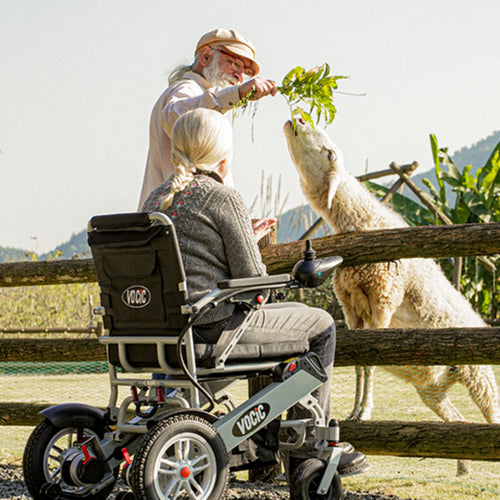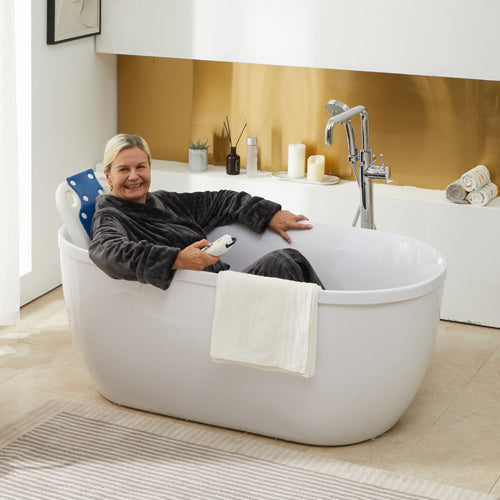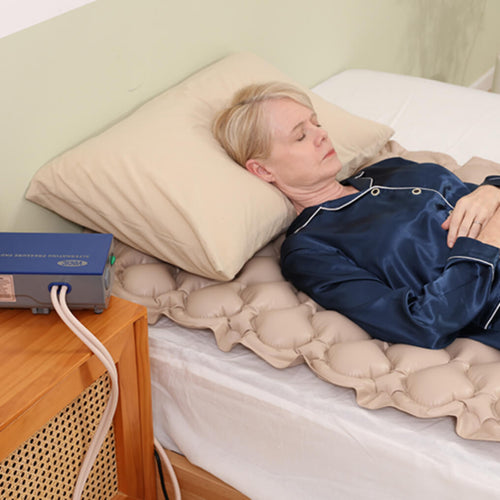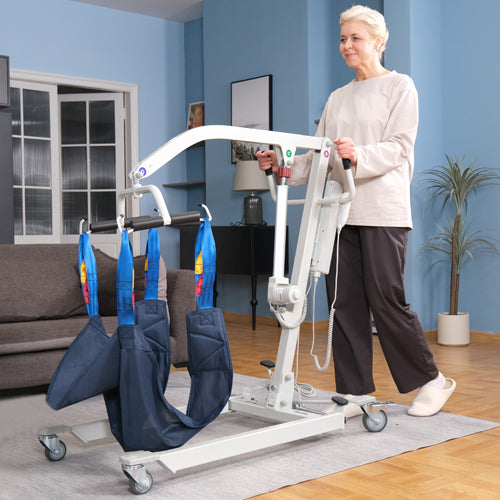Mobility aids can be mobility devices that increase independence and safety for people with chronic conditions. Not only are they an aid to physical mobility, but they are also a key factor in maintaining their quality of life and emotional well-being. This article explores how mobility devices can help people living with chronic conditions.
What Is a Chronically Ill Patient?
A person with a chronic condition is someone who has a long-term or persistent illness that interferes with daily activities. Common chronic conditions include diabetes, heart disease, arthritis, and asthma. These conditions vary in severity and often require ongoing treatment or management to control symptoms and maintain quality of life. For example, managing type 2 diabetes requires lifelong monitoring and adjustments to medications, diet, and lifestyle to stabilize blood sugar levels and prevent complications.
What Mobility Aids Can Help People with Chronic Conditions?
For many people with chronic conditions, mobility aids can be a great help in maintaining their independence and improving their quality of life. Here are some common mobility aids that can help people with chronic conditions:
-
Canes: Useful for those who have slight balance issues or need minor support. Canes can help redistribute weight and reduce strain on a particular body part.
-
Walkers: Provide more stability than canes and are ideal for those who require substantial support to maintain balance while walking. Walkers may be equipped with wheels or simple frames that need to be lifted.
-
Wheelchairs: Necessary for individuals who cannot walk or who can walk only very short distances. Wheelchairs range from manually operated models to advanced electric ones.
-
Mobility Scooters: Beneficial for those who can walk short distances but need assistance for longer trips. Scooters allow for greater distance coverage with less fatigue.
-
Crutches: Aid those recovering from temporary injuries or surgeries but are also used by people with long-term mobility challenges. Crutches help keep weight off specific lower body parts while providing support to move.
-
Orthotic Devices: Include braces and splints that provide support and relieve pain by aligning, preventing, or correcting deformities or improving the function of movable parts of the body.
Each type of aid is designed to match specific mobility needs and can significantly impact the autonomy and comfort of individuals with chronic conditions.

What Are the Benefits of Mobile Aids for Chronic Patients?
Mobility aids can provide many benefits to people with chronic conditions, improving their quality of life and independence. Here are some of the key benefits:
-
Increased Independence: Mobility aids allow individuals to move around more freely without needing constant assistance from others. This can lead to greater autonomy in daily activities.
-
Enhanced Safety: By providing support and stability, mobility aids reduce the risk of falls and injuries. This is crucial for those with balance issues or muscle weakness.
-
Pain Relief: For chronic conditions that cause pain or discomfort, mobility aids can help by redistributing weight and reducing the strain on specific body parts.
-
Improved Mobility: Mobility aids can significantly improve an individual's ability to navigate different environments, from getting around the house to traveling outside.
-
Better Social Interaction: With the help of mobility aids, individuals can engage more in community and social activities, which is important for mental health and well-being.
-
Increased Exercise and Activity: These aids encourage movement and activity, which are beneficial for overall health and can help in managing symptoms of chronic conditions.
-
Psychological Benefits: Gaining back independence and mobility can greatly improve mental health, reduce feelings of isolation, and boost confidence.
Mobility aids play an important role in managing chronic disease by supporting physical mobility and promoting mental and emotional well-being.
How to Choose the Right Mobility Aid for Chronically Ill Elderly People?
Choosing the right mobility aids for older adults with chronic conditions requires consideration of their specific needs, preferences, and medical conditions. Here are some steps and considerations to help select the right mobility aids:
-
Mobility Needs Assessment: To choose the right mobility aid, first assess the mobility needs of the senior. Consider how much support they need, the environment they will be walking in, and their physical abilities, such as strength and balance. This helps narrow down the type of assistive device that will provide the best support.
-
Consulting a healthcare professional: It is essential to consult a healthcare professional, such as a physiotherapist or doctor. They can provide professional insight and recommend the most appropriate assistive device based on a comprehensive assessment of the senior's health and mobility needs.
-
Types of Mobility Aids: The choice of mobility aid depends on the level of support required. Options include canes for light support and wheelchairs for those who cannot walk. Each type meets different mobility needs, and choosing the right type can significantly improve a senior's mobility.
-
Fit and Comfort: You need to ensure that the mobility aid fits well to avoid discomfort or further mobility problems. The assistive device should be adjustable to accommodate changes in the senior's needs, providing lasting comfort and effectiveness.
-
Ease of Use: The selected walker should be easy for the senior to use independently. Factors such as the weight and design of the walker can affect how confident and efficient the senior is when using it independently.
-
Durability and Quality: Choose a walker that is high quality, durable, and built to withstand daily use. Investing in a quality product from a reputable brand ensures reliability and safety.
-
Additional features: Consider a mobility aid with additional features, such as brakes, seats, or baskets, to enhance convenience and safety. These features can significantly improve the usability and functionality of a mobility aid.
-
Trial period: If possible, utilize a trial period to test different mobility aids. This allows seniors to try out the mobility aid in their everyday environment, ensuring that the selected mobility aid effectively meets their specific needs and preferences.
By taking these factors into account, you can help ensure that the selected mobility aid effectively supports the elderly person’s needs and contributes to their overall quality of life. If you're considering purchasing mobility aids, VOCIC offers a variety of options to meet diverse needs. They provide different types of rollators, electric wheelchairs, and foldable mobility scooter. Explore VOCIC's range to find a mobility solution that enhances comfort and independence for the elderly.

What Are the Precautions for Caring for Chronically Ill Elderly People?
Caring for seniors with chronic illnesses requires thoughtful consideration to ensure their safety, comfort, and well-being. Here are some precautions to keep in mind:
-
Regular medical checkups: Make sure seniors see a healthcare professional regularly to monitor their condition and adjust treatment as needed. Regular medical checkups help manage illness effectively and prevent complications.
-
Medication management: Manage medications properly to avoid missed doses or overdoses. Use a pill organizer and set reminders to help keep track of medication schedules. Review medications regularly with your healthcare provider to address any side effects or interactions.
-
Home safety modifications: Modify your home environment to reduce the risk of falls and accidents. Install grab bars in bathrooms, ensure adequate lighting, eliminate trip hazards, and consider using non-slip mats in key areas.
-
Nutritional care: Provide a balanced diet that meets their health needs. Many chronic conditions require specific dietary considerations. Consult a dietitian to develop a diet plan that supports their health status.
-
Physical activity: Encourage regular physical activity appropriate to their ability level as recommended by their healthcare professional. Exercise helps maintain mobility, improves mood, and enhances overall well-being.
-
Emotional support: Chronic conditions can be emotionally stressful for patients. Provide emotional support through regular interactions, listen to your patients’ concerns, and involve them in care decisions. If signs of depression or anxiety persist, consider seeking professional help.
-
Educate yourself and others: Understand the senior's condition and the best way to care for them. Educating family members and caregivers ensures that their daily care needs are met in a consistent and informed manner.
-
Use assistive devices: Ensure that all necessary assistive devices are available and in good working order. These devices include walkers and specialized medical equipment, such as oxygen machines or monitoring devices.
Implementing these preventive measures can improve the quality of care provided to chronically ill seniors, increase their quality of life, and reduce the risk of complications.
Conclusion
Mobility aids can enhance the independence and mobility of people with chronic conditions. They can be customized to meet individual needs and physical conditions. Improve mental health by increasing safety and mobility and promoting independence.









